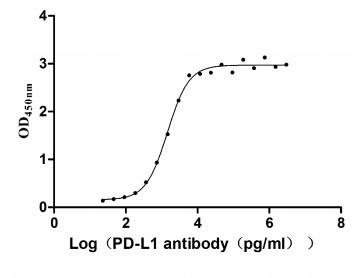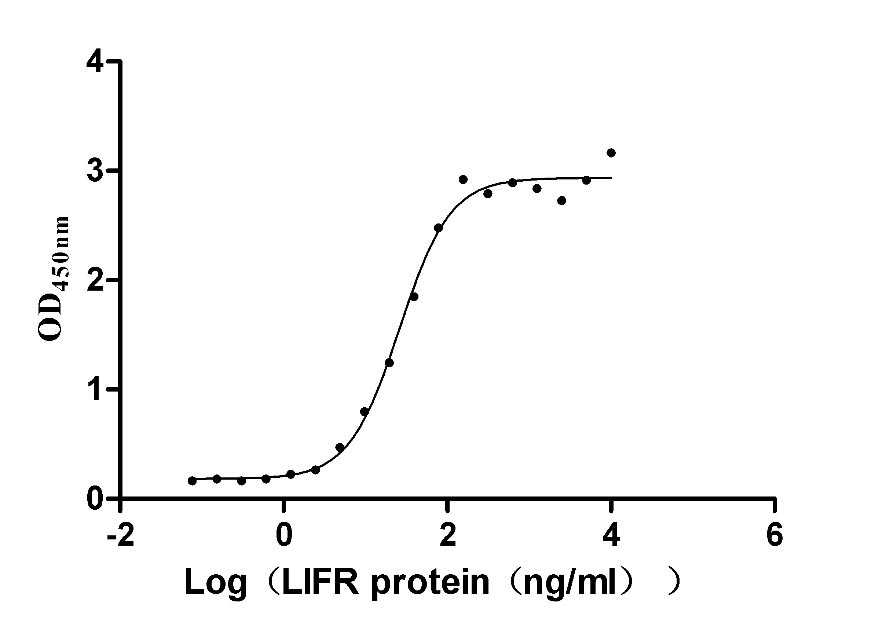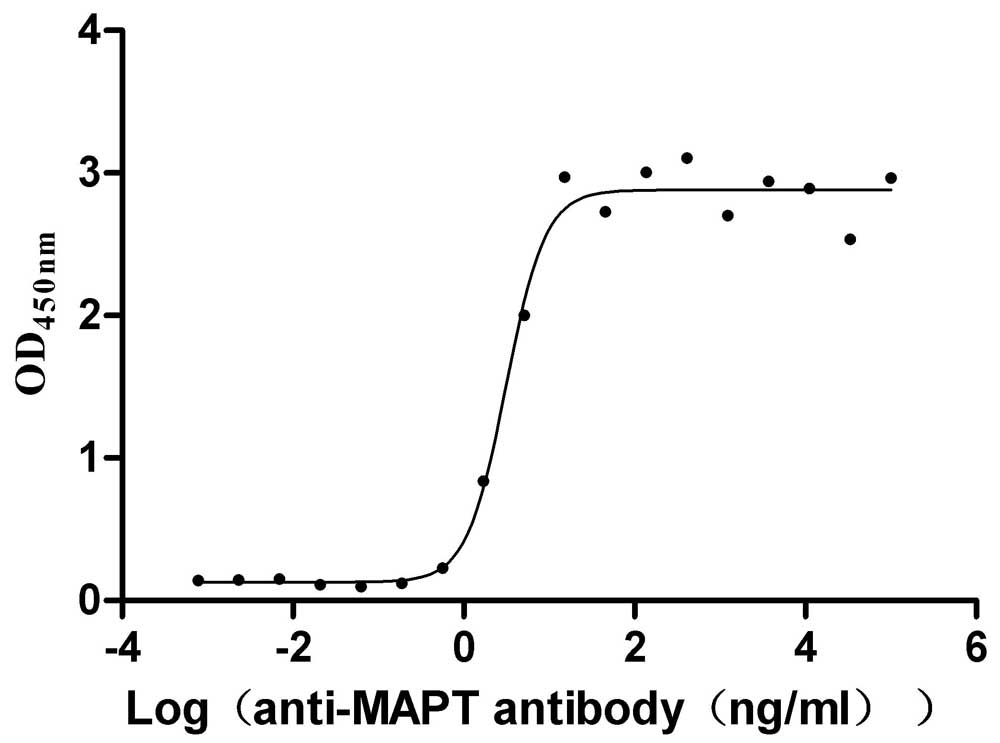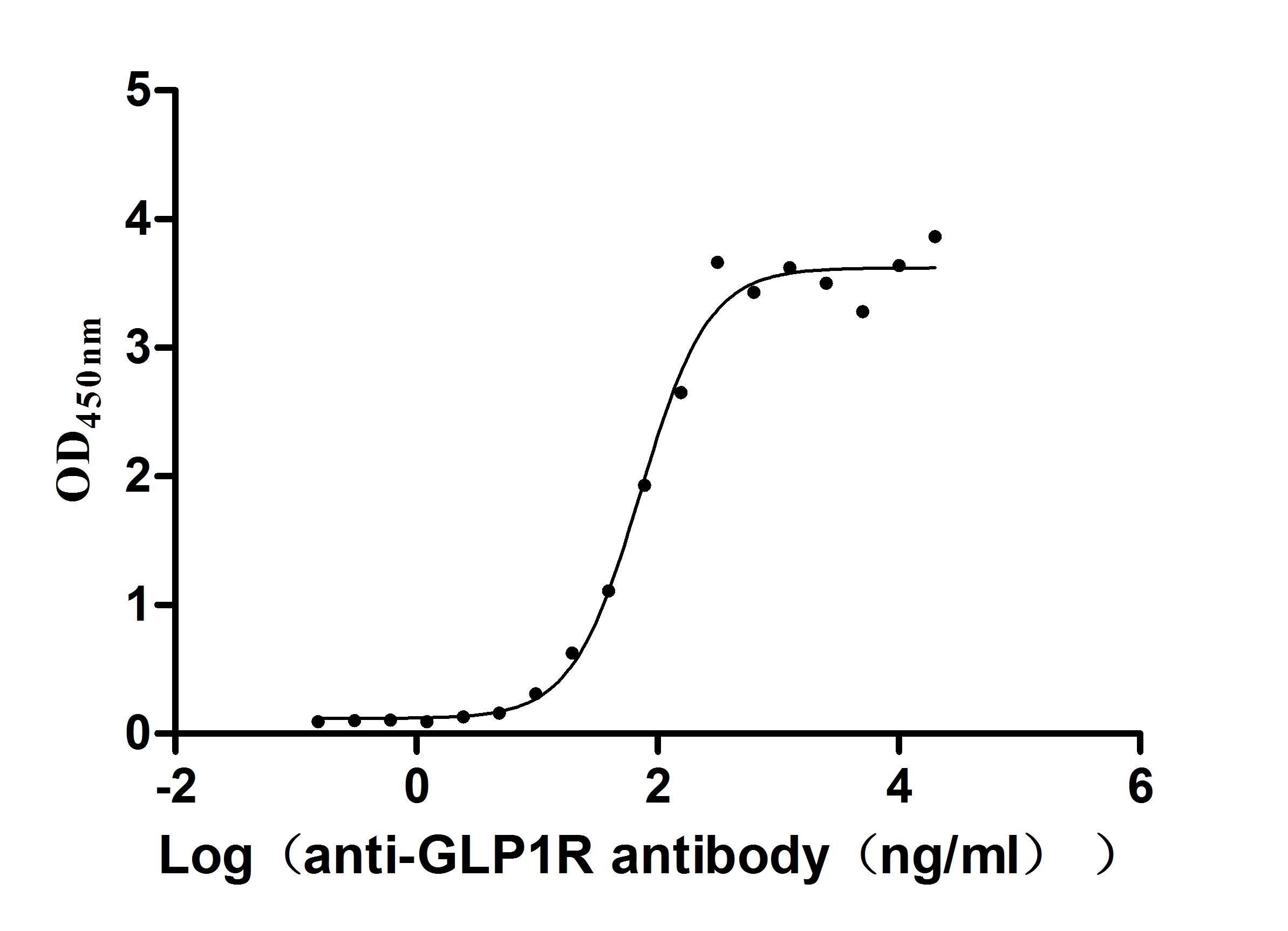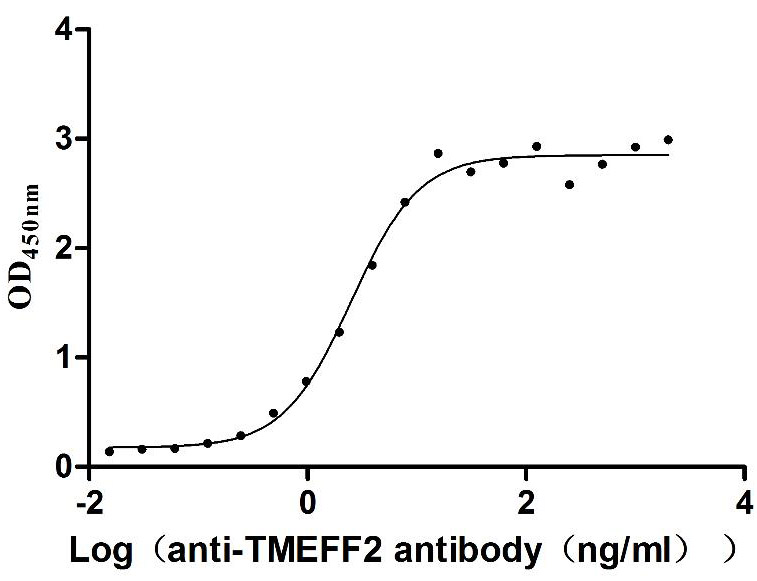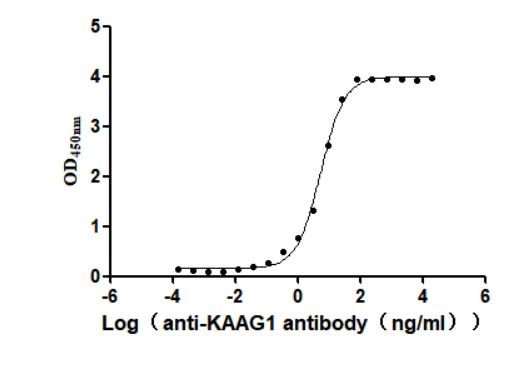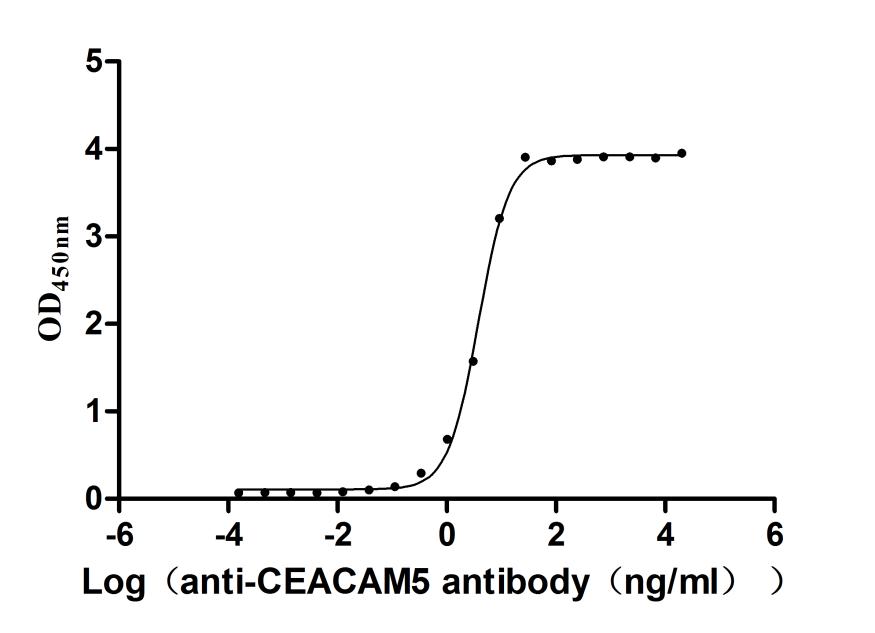Recombinant Human H (+)/Cl (-) exchange transporter 3 (CLCN3), partial
-
中文名称:Recombinant Human H(+)/Cl(-) exchange transporter 3(CLCN3) ,partial
-
货号:CSB-YP005482HU
-
规格:
-
来源:Yeast
-
其他:
-
中文名称:Recombinant Human H(+)/Cl(-) exchange transporter 3(CLCN3) ,partial
-
货号:CSB-EP005482HU
-
规格:
-
来源:E.coli
-
其他:
-
中文名称:Recombinant Human H(+)/Cl(-) exchange transporter 3(CLCN3) ,partial
-
货号:CSB-EP005482HU-B
-
规格:
-
来源:E.coli
-
共轭:Avi-tag Biotinylated
E. coli biotin ligase (BirA) is highly specific in covalently attaching biotin to the 15 amino acid AviTag peptide. This recombinant protein was biotinylated in vivo by AviTag-BirA technology, which method is BriA catalyzes amide linkage between the biotin and the specific lysine of the AviTag.
-
其他:
-
中文名称:Recombinant Human H(+)/Cl(-) exchange transporter 3(CLCN3) ,partial
-
货号:CSB-BP005482HU
-
规格:
-
来源:Baculovirus
-
其他:
-
中文名称:Recombinant Human H(+)/Cl(-) exchange transporter 3(CLCN3) ,partial
-
货号:CSB-MP005482HU
-
规格:
-
来源:Mammalian cell
-
其他:
产品详情
-
纯度:>85% (SDS-PAGE)
-
基因名:CLCN3
-
Uniprot No.:
-
别名:CLCN3; H(+/Cl(- exchange transporter 3; Chloride channel protein 3; ClC-3; Chloride transporter ClC-3
-
种属:Homo sapiens (Human)
-
蛋白长度:Partial
-
蛋白标签:Tag type will be determined during the manufacturing process.
The tag type will be determined during production process. If you have specified tag type, please tell us and we will develop the specified tag preferentially. -
产品提供形式:Lyophilized powder
Note: We will preferentially ship the format that we have in stock, however, if you have any special requirement for the format, please remark your requirement when placing the order, we will prepare according to your demand. -
复溶:We recommend that this vial be briefly centrifuged prior to opening to bring the contents to the bottom. Please reconstitute protein in deionized sterile water to a concentration of 0.1-1.0 mg/mL.We recommend to add 5-50% of glycerol (final concentration) and aliquot for long-term storage at -20℃/-80℃. Our default final concentration of glycerol is 50%. Customers could use it as reference.
-
储存条件:Store at -20°C/-80°C upon receipt, aliquoting is necessary for mutiple use. Avoid repeated freeze-thaw cycles.
-
保质期:The shelf life is related to many factors, storage state, buffer ingredients, storage temperature and the stability of the protein itself.
Generally, the shelf life of liquid form is 6 months at -20°C/-80°C. The shelf life of lyophilized form is 12 months at -20°C/-80°C. -
货期:Delivery time may differ from different purchasing way or location, please kindly consult your local distributors for specific delivery time.Note: All of our proteins are default shipped with normal blue ice packs, if you request to ship with dry ice, please communicate with us in advance and extra fees will be charged.
-
注意事项:Repeated freezing and thawing is not recommended. Store working aliquots at 4°C for up to one week.
-
Datasheet :Please contact us to get it.
相关产品
靶点详情
-
功能:Strongly outwardly rectifying, electrogenic H(+)/Cl(-)exchanger which mediates the exchange of chloride ions against protons. The CLC channel family contains both chloride channels and proton-coupled anion transporters that exchange chloride or another anion for protons. The presence of conserved gating glutamate residues is typical for family members that function as antiporters.; Strongly outwardly rectifying, electrogenic H(+)/Cl(-)exchanger which mediates the exchange of chloride ions against protons.
-
基因功能参考文献:
- Unique oligomerization properties of ClC-4 permit regulated targeting of ClC-4 to various endosomal compartment systems via expression of different ClC-3 splice variants. PMID: 28972156
- we demonstrated that ClC-3 can arrest the cell cycle at the G1 phase to inhibit cell proliferation, suggesting that ClC-3 has the potential to be a novel target for hepatocellular carcinoma (HCC) therapy and potentially improve the prognosis of HCC patients PMID: 29749557
- CLC-3 may get involved in proliferation, invasion, and migration of ovarian cancer cells and thus may be a useful therapeutic target. PMID: 29787012
- ClC-3 is a potential target of 17beta-estradiol and is modulated by the ERalpha in breast cancer cells. PMID: 28419445
- Study provided novel and compelling evidence for the functional role of the unique CLC-3, which are significantly upregulated during ischemia, in the protection of the heart under stress PMID: 27064645
- ClC-3 promotes endometriotic cell migration and invasion. PMID: 26965430
- these results demonstrated that ClC-3 is involved in the proliferation and migration of osteosarcoma cell PMID: 25973047
- Data indicate that cytoplasmic chloride channel-3 (ClC-3) plays an active and key role in tumor metastasis and may be a valuable prognostic biomarker and a therapeutic target to prevent tumor spread. PMID: 25537517
- CLC3 is required in the activation and migration of human blood eosinophils. PMID: 25514499
- Authors summarize the function of CLC-3 in cancer and discuss the mechanisms by which CLC-3 contributes to proliferation, apoptosis and drug resistance in cancer cells. [Review] PMID: 25421907
- swelling-activated Cl currents and CLC-3 play a role in pulmonary artery smooth muscle cell proliferation, but CLC-3 channels do not underlie swelling in these cells PMID: 24284495
- ClC-3 deficiency inhibited Ang II-induced EPC apoptosis via suppressing ROS generation derived from NADPH oxidase. PMID: 23873092
- Suggest that ClC-3 suppression causes the inhibition of Akt and autophagy, which can enhance the therapeutic benefit of cisplatin in U251 cells. PMID: 23408563
- K(Ca)3.1 and ClC-3 are expressed in tissue samples obtained from patients diagnosed with grade IV gliomas. Both K(Ca)3.1 and ClC-3 colocalize to the invading processes of glioma cells PMID: 23345219
- Data indicate in umbilical vein endothelial cells transfected with ClC-3 siRNA showed activation of NF-kappaB. PMID: 23006728
- results reveal a cell cycle-dependent change of the subcellular distribution of ClC-3 and strongly suggest that ClC-3 has nucleocytoplasmic shuttling dynamics that may play key regulatory roles during different stages of the cell cycle in tumor cells. PMID: 22371056
- ClC-3 is a candidate of the channel proteins that mediate or regulate the acid-activated chloride current in nasopharyngeal carcinoma cells. PMID: 22496242
- ClC-3 protein may be considered as a potential tumor marker and therapeutic target for human nasopharyngeal carcinoma. PMID: 22108225
- ClC-3 may be a main component of background chloride channels which can be activated under isotonic conditions by autocrine/paracrine ATP through purinergic receptor pathways; the background current is involved in maintenance of basal cell volume. PMID: 21792908
- ClC-3 is involved in the activation of volume-activated chloride currents but not of stretch-activated chloride currents in hepatocellular carcinoma cells. PMID: 20945353
- High ClC-3 is associated with extensive migration and invasion in glioma. PMID: 21115901
- ClC-3 is an important molecular component underlying VSOACs and the RVD process in HeLa cells PMID: 12183454
- results show that the ClC-3B PDZ-binding isoform resides in the Golgi where it co-localizes with a small amount of CFTR (cystic fibrosis transmembrane conductance regulator) PMID: 12471024
- results suggest a fundamental role of endogenous ClC-3 in the swelling-activated Cl- channels function and cell volume regulation in human gastric epithelial cells PMID: 12842831
- ClC-3 and ZnT3 reside in a common vesicle population where they functionally interact to determine vesicle luminal composition. PMID: 15073168
- volume-regulated ClC-3 Cl(-) channels play important role in the regulation of [Cl(-)](i) and cell proliferation of vascular smooth muscle cells PMID: 15596438
- Clcn3 was considered the most likely candidate of Cl- channel involved in volume regulation of human sperm. PMID: 16033995
- ClC-3 is required for normal neutrophil oxidative function, phagocytosis, and transendothelial migration PMID: 16522634
- This study demonstrates that superoxide flux across the endothelial cell plasma membrane occurs through chloride channel-3 channels and induces intracellular calcium release, which activates mitochondrial superoxide generation. PMID: 17360969
- The relative density of CLC-3 mRNA was 0.22+/-0.09 and 0.12+/-0.05 in HNECs treated with 3 and 0.9% saline, respectively. PMID: 17869465
- CLC-3 is upregulated in ethmoid mucosa and may affect the development of chronic rhinosinusitis without nasal polyps. PMID: 17882904
- inhibition of the NADPH oxidase or ClC-3 in otherwise unstimulated cells elicited a phenotype similar to that seen after endotoxin priming, suggesting that basal oxidant production helps to maintain cellular quiescence. PMID: 17908687
- oxidation induces surface expression of ClC-3 and activation of a ClC-3-dependent anion permeability in K562 cells PMID: 17976378
- ClC-3 overexpression induced a pH-sensitive conductance in HEK293T cells that is biophysically similar to ClC-4 and ClC-5. PMID: 17977943
- These data confirm that ClC-3 is important in VRAC function and cell volume regulation, is associated with the I(Cl,LPA) current activity, and participates in the fibroblast-to-myofibroblast transition. PMID: 18077605
- An essential role of sClC-3 in native volume-sensitive outwardly rectifying anion channels function in mouse atrial myocytes. PMID: 18986326
显示更多
收起更多
-
亚细胞定位:[Isoform 1]: Early endosome membrane; Multi-pass membrane protein. Late endosome membrane; Multi-pass membrane protein. Lysosome membrane; Multi-pass membrane protein. Cell membrane; Multi-pass membrane protein.; [Isoform 2]: Golgi apparatus membrane; Multi-pass membrane protein. Cell projection, ruffle membrane; Multi-pass membrane protein.
-
蛋白家族:Chloride channel (TC 2.A.49) family, ClC-3/CLCN3 subfamily
-
组织特异性:Expressed primarily in tissues derived from neuroectoderm. Within the brain, its expression is particularly evident in the hippocampus, olfactory cortex, and olfactory bulb. Highly expressed in aortic and coronary vascular smooth muscle cells, and aortic
-
数据库链接:
Most popular with customers
-
Recombinant Human Programmed cell death 1 ligand 1 (CD274), partial (Active)
Express system: Mammalian cell
Species: Homo sapiens (Human)
-
Recombinant Human Leukemia inhibitory factor (LIF) (Active)
Express system: Mammalian cell
Species: Homo sapiens (Human)
-
Recombinant Human Neuropilin-1 (NRP1) (Active)
Express system: Mammalian cell
Species: Homo sapiens (Human)
-
Recombinant Macaca mulatta Microtubule-associated protein tau (MAPT) (Active)
Express system: Mammalian cell
Species: Macaca mulatta (Rhesus macaque)
-
Recombinant Human Glucagon-like peptide 1 receptor (GLP1R), partial (Active)
Express system: Mammalian cell
Species: Homo sapiens (Human)
-
Recombinant Human Tomoregulin-2 (TMEFF2), partial (Active)
Express system: Mammalian cell
Species: Homo sapiens (Human)
-
Recombinant Human Kidney-associated antigen 1(KAAG1) (Active)
Express system: Baculovirus
Species: Homo sapiens (Human)
-
Express system: Mammalian cell
Species: Macaca mulatta (Rhesus macaque)


